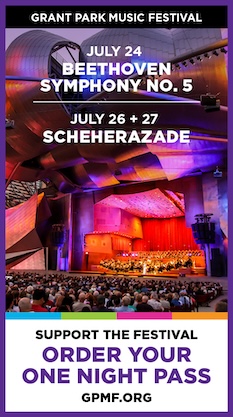Pacifica Quartet and Civic Orchestra strike sparks in double helping of Shostakovich

You want your Shostakovich, you got your Shostakovich.
Chicago was the place to be for aficionados of the Russian composer on Sunday. The Pacifica Quartet presented the second program of their season traversal of Shostakovich’s complete quartets in the afternoon at Roosevelt University. And, after a dinner break, one could run over to Orchestra Hall to catch conductor Jaap van Zweden lead the Civic Orchestra in Shostakovich’s Chamber Symphony.
Word is clearly getting out that the Pacifica’s unfolding cycle is one of the major events of this season. A significant crowd showed up for the matinee performance at Ganz Hall–the ensemble repeats each program in the evening as well–and extra aisle seating was necessary to accommodate the overflow.
This second program brought two important transitional works, the Fourth and Fifth Quartets and the Piano Quintet, with guest Orion Weiss.
The Quartet No. 4 was written in 1949 at a time of intense political drama for the composer, yet for all its serious inward-looking qualities, the Fourth is one of Shostakovich’s most lyrical quartets. Notable is the sinuous, Middle Eastern feel of the opening and the spacious sweet lyricism of the Andantino; one of Shostakovich’s most indelible inspirations, the movement received playing of ineffable tenderness by Simin Ganatra. The group’s first violinist also brought a febrile fervor to the Jewish-inflected elements in the finale, which enjoyed exceptional playing by all; the slow gradual fade of Brandon Vamos’s cello against the soft pizzicati of the other three players was most beautifully rendered.
Along with its quartet predecessor, and the Violin Concerto No. 1, the Quartet No. 5 is one of the works that Shostakovich suppressed and kept in a drawer until after Stalin’s death, fearing its dark expression would create problems with the Soviet cultural commissars.
Cast in three large connected movements, the Fifth is the first work in the cycle to really show the composer’s full maturity. Shostakovich’s structural ease and confidence in balancing starkly varied material is clear, as with the first movement’s brutal, aggressive drive set against the lilting song-like second theme.The expansive middle movement has some of the same elevated, searching expression of Shostakovich’s Preludes and Fugues to come, and received playing of extraordinary control and concentration by the Pacifica members.
The Piano Quintet is an earlier work from 1937, which was an instant success, the composer performing it widely on tour with the Beethoven String Quartet.
Sunday’s performance was a fine one with the Pacifica players showing their usual refinement and detailing of color and expressive nuance. Weiss was an attentive and technically alert partner though the pianist’s fractionally heavy touch and somewhat bluff style didn’t always match the expressive nuance and tonal sensitivity of his colleagues.
Sunday with Shostakovich continued in the evening with van Zweden leading the Civic in the Russian composer’s Chamber Symphony, a worthy follow-up to his knife-edged performance of Shostakovich’s Eighth Symphony with the CSO last week.
Rudolf Barshai’s string arrangement of Shostakovich’s Eighth String Quartet is undeniably effective in this version, and the kinetic Dutch conductor drew a crackling, rich-textured reading from the Civic strings, who played with a dark, burnished tone that perfectly fit this music.
The combustible performance of Tchaikovsky’s Symphony No. 5 that followed was on the same high level. Taking fleet tempos, van Zweden elicited bravura string playing in a thrilling, often electrifying performance. Some fleeting horn bobbles apart, the Civic players outdid themselves in every section with notably majestic trombones adding great punch to the final movement.
Posted in Performances
